For most of this spring, I’ve been on a bit of a heicha kick.
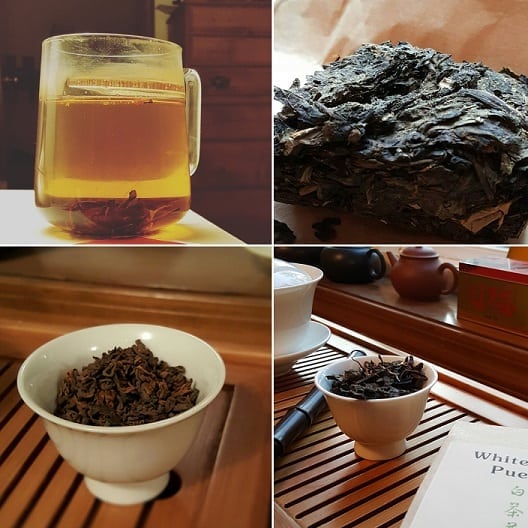
Not puerh . . . heicha. As in, dark (or fermented) teas not from Yunnan province, China.
I’m not sure when it all started, but I have a feeling this dude had something to do with it.
Meet Chris Kornblatt, co-owner of Quantitea. A couple of months back, Anna “The Tea Squirrel” Mariani informed me that she was meeting up with Chris at his fledgling tea speakeasy in San Francisco. (That seems to be spreading, the ol’ “tea speakeasy” concept.) She asked if there was anything I wanted to inquire about while she was there. I did a quick perusal of their product listing, and my eyes beaded in on one particular tea.
The tea was called Gu Yu Cha (translation: “grain rain tea”), and it was unlike any heicha I’d ever seen before. It hailed from Guangxi province, but it wasn’t the usual “Liu Bao”-ish bamboo-aged heicha that came from there. The leaves appeared loose and un-pressed, like normal hei maocha (semi-finished dark tea) left to age on its own. And that it did, the stuff was made back in 1995! The original farmer hadn’t intended to sell it. But some enterprising dude did acquire it, and a couple of decades later, an enterprising young lad bought it from said collector. Even more years after that, Quantitea Chris wholesaled it.
That had all the hallmarks of a “me”-like tea.
Anna put in a good word for me, and Chris and I started talking. The fruits of that dialogue manifested themselves in a small package arriving on my doorstep a week or so later. Two teas: some oolong and the Gu Yu Cha.
The leaves were, quite frankly, rather huge for a heicha—very little cutting and/or rolling. That and there were a lot of stems and twigs. As I mentioned earlier, it didn’t fall in line with any of the known heicha types I (recently) familiarized myself with. Palette-wise, the leaves were rust red to dust brown, and the aroma was this pleasant silk and earth . . . thing. Very difficult to describe; like well-seasoned date sugar malted onto the back of an unsuspecting piece of cinnamon bark.
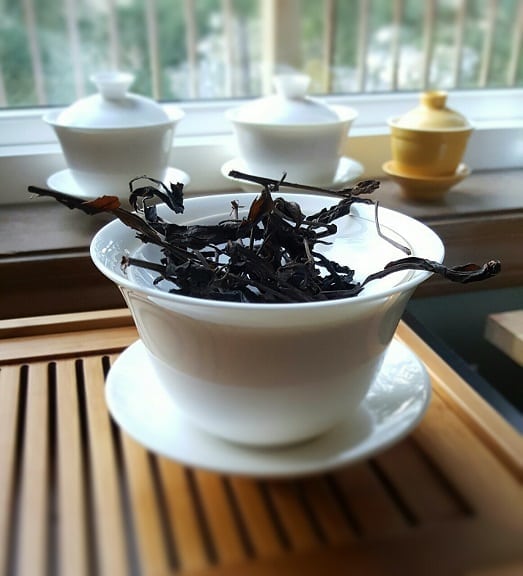
The liquor for each infusion brewed up a very bold amber color. The aroma was toasty, earthy, kindling-like and subtly smoky on the back-end. It reminded me of the echoes of a campfire. Wait, no, the “huigan” of a forest fire! Yeah, that’s the ticket. Taste-wise, it was sweet on the front, earthy at the top, and then seemed to . . . travel back in time in my mouth. I felt like my tongue was entering a time vortex of taste sans T.A.R.D.I.S. A part of me tasted what it was supposed to be, while another experienced the flavor of what it was. I don’t have a more concrete way of putting it.
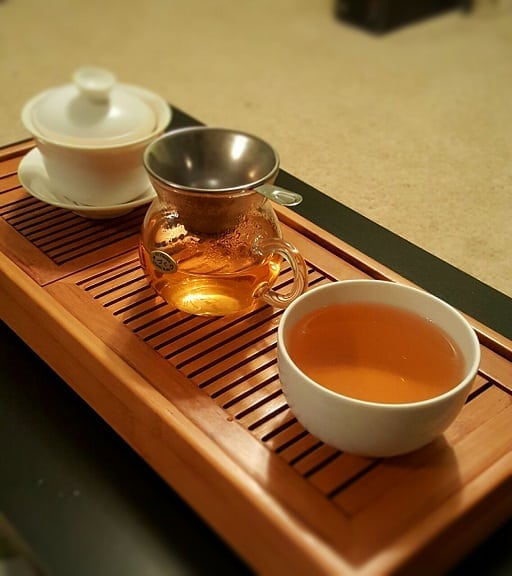
After the first few steeps, a strange thing happened.

I had several more.
And then I found myself sitting like this.
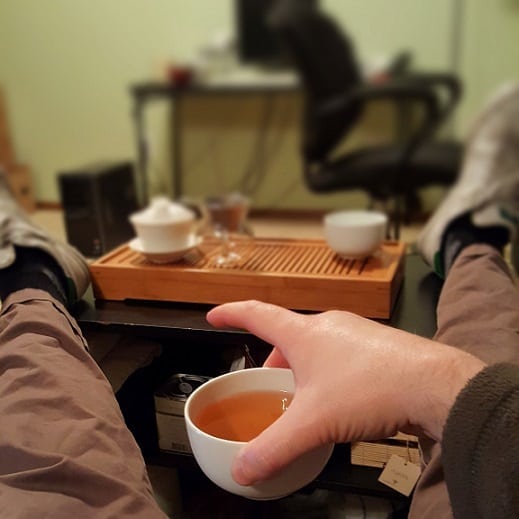
It was a relaxed position I found myself in every time I drank heicha. That and I felt good. Like, really good. Not a care in the world. Was it because I was drinking said tea at night?
In the interim, I got another message from Chris. He informed me that there was another heicha he meant to send my way. This time, it was a tea dubbed “Shi Liang Cha”, which translated to “Ten Tael Tea”. It was a heicha made in 2010, hailing from Anhua county. The dark tea fell under the heicha subcategory of Hua Juan Cha (“Flower Roll Tea”). It was a Hunan province type. What set this type of heicha apart from others was the way the leaves were dried and the way they were pressed. They came in variant weight measurements referred to as “taels”. I’d always heard the word “tael” bandied about among heicha drinkers, but I never knew what it meant.
That tea arrived a week later.
This was more like what I considered heicha—chisels and clumps of compressed brown leaf that came from a much larger body. It looked like a pile of mulch that had imploded in on itself in the form of compressed tea. And the smell was a little bit more young-seeming. Sweet and dark; y’know, like a typical dark tea, only with a mature edge to it.
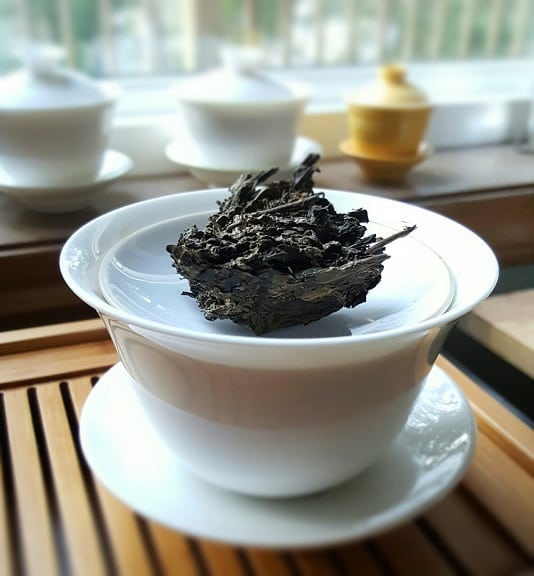
The liquor on the tael was a far lighter bronze than the Gu Yu. Big shock, it was a lot younger, after all. But there was a surprising amount of experience to it, even on the forefront. Sure, it started off a little bit youthful with a sweet enough prologue—reminiscent of a winier Long Jing. But then it went into a more layered dance of palate notes; some puerh-ish, others more terroir-specific. There was green tea fruitiness, earth floor, a bit of Wuyi “cliffy-ness”, and then it just ended with embers of scholar’s parchment.
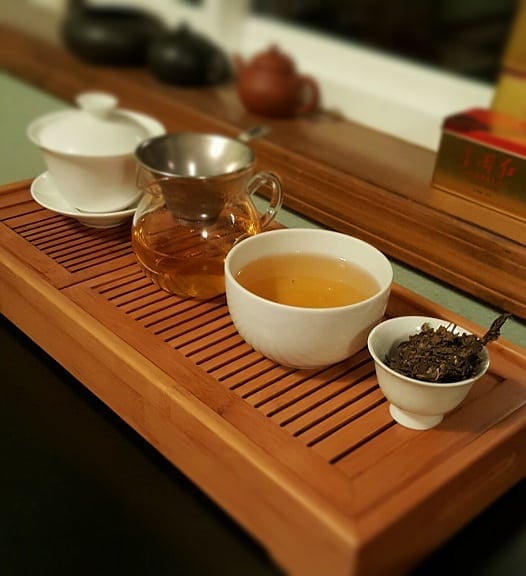
Like with the Gu Yu, I had several steeps . . . and then several more. And, eventually, I found myself in the same position. Feet propped up, totally chill, and generally giving very few f**ks. About anything. I should also add this tasting also happened at night.
And that was the key word here: night.
I’m not sure if this was the case with anybody else, but the time I craved heicha was always after sunset. Further sessions with both of these teas always happened either after work or right before bed. And whatever the caffeine content, neither tea hindered my sleep patterns. (Much?) If I had a hard day, and I was duly clothed in pajamas, I fired up the kettle and prepped a gaiwan full of wet-piled, post-fermented leaves.
Heicha was my “happy hour” tea. Maybe someday, I’ll mosey on down to San Francisco and treat myself to a real happy hour-ish, speakeasy-ish experience at Chris’s new underground tasting room. People have said good things.
Even Portland tea friends.
But for now, if you’ll excuse me, another steep is calling.

To buy the Gu Yu Cha, go HERE.
To buy the Ten Tael Heicha, go HERE.

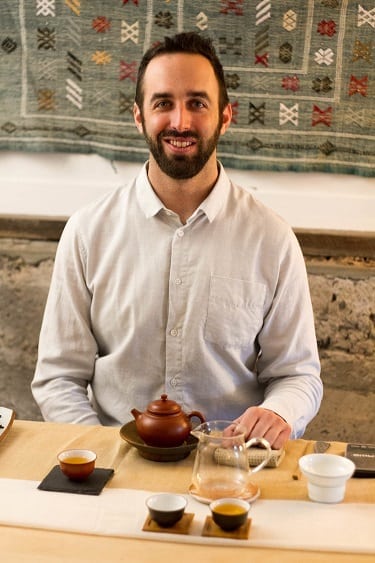
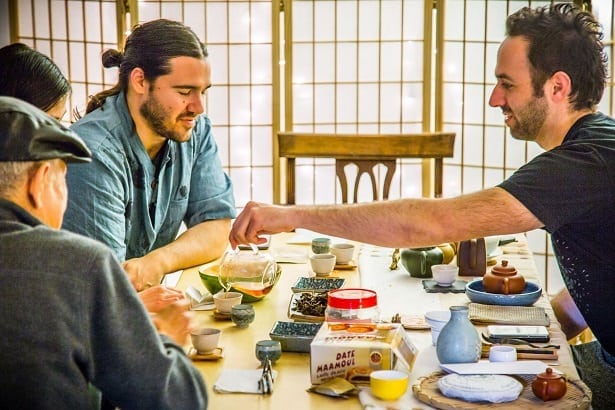
Xavier
Beware, you are becoming a vampire tea drinker 😀
lazyliteratus
🙂